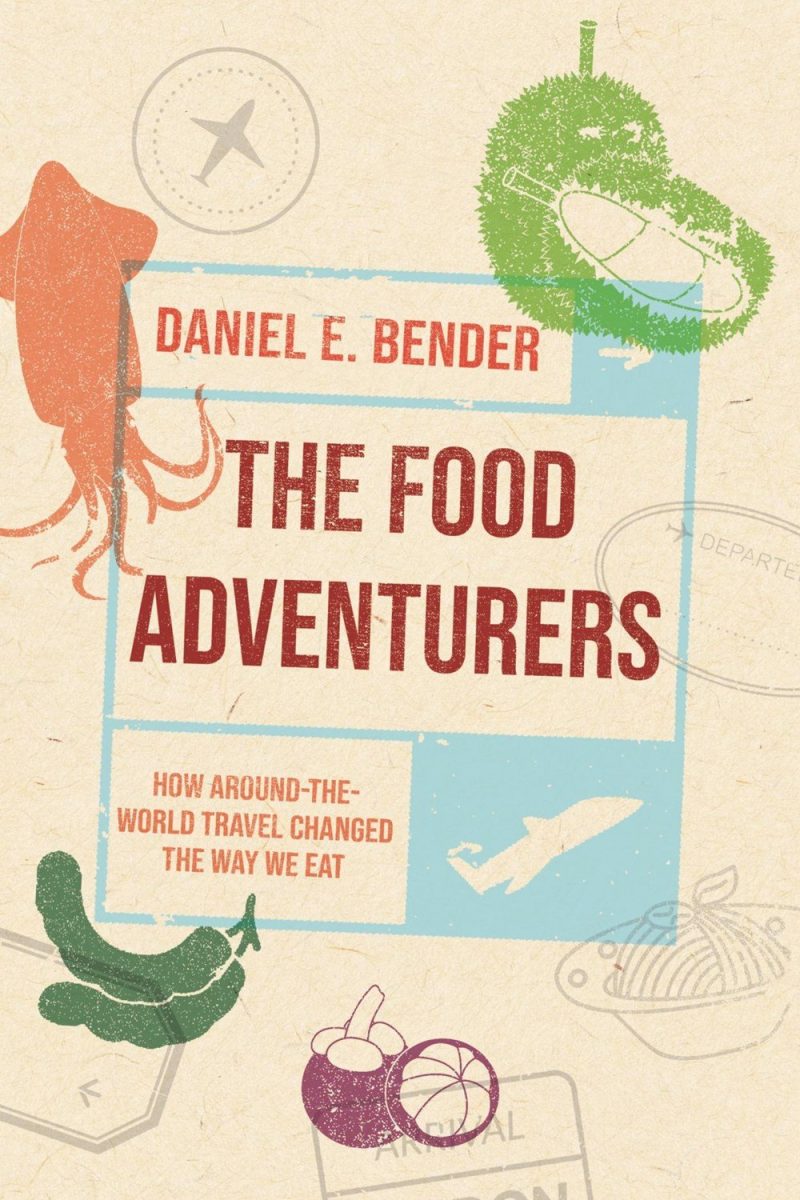
In The Food Adventurers, Daniel E Bender relates the birth of modern food tourism through the meals eaten by the first people to travel for pleasure and write about it. Photo: Supplied.
Searching for a new culinary experience? Do you pick your holiday destination based on the local food?
Professor of food studies and history at the University of Toronto Daniel E Bender did just that, and recounts the birth of modern food tourism through the ‘’meals eaten by the first people to travel for pleasure and write about it’’.
Discover how the phenomenon evolved over the past two centuries, from the golden age of steamships to the glamorous era of airplane travel. Reconnoitering a link between international travel, culture and diet makes for some enticing, delectable reading.
The Food Adventurers is a meticulously researched tome, with photographs and illustrations. It’s not wrong to suggest people are ”quite right to be nervous’’ of new eating experiences, especially the ”fiery torments” of curries and spices, which can burn the mouth ”like a live coal” and ”cause tears to flow”. Nonetheless, there are some who relish tracking spots for peculiar lunches and dinners.
Two years into COVID-19 and Bender admits to planning a trip around the world. There was talk of doom and gloom and the pros and cons of staying put, but soon optimism crept in as travellers began to pack their bags again. Hence, the Canada Research Chair in Food and Culture was charting his itinerary for an “eating trip around the world”.
Bender goes on to explain: “As I plan my journey, I decide to follow the route of the Franconia, a ‘super Cruise Ship’ launched by the massive steamship line Cunard in 1922. Between the world wars, this all-first-class ship hosted the ‘supreme travel-adventure’, an annual around-the-world cruise organized by the travel agency Thomas Cook.”
He even finds a flight planner for an airline group that offered an around-the-world ticket specially designed for foodies. It stated: “Travel the world to appreciate its cultural diversity and savour its many flavours … Try kebabs in Istanbul or galvi in Seoul – or tweak the itinerary ‘to seek out restaurants and food stalls where locals eat’.”
From mangosteen fruit discovered in a colonial Indonesian marketplace to caviar served on the high seas in a cruise liner’s luxurious dining saloon, The Food Adventurers narrates the history of eating on the most coveted of tourist journeys: the around-the-world adventure. The book looks at what tourists ate on these adventures, as well as what they avoided, and what kinds of meals they described in diaries, photographs and postcards.
Bender shows how circumglobal travel shaped popular fascination with world cuisines, and leads us on a culinary tour from Tahitian roast pig in the 1840s to the dining saloon of the Franconia, in the 1920s, to InterContinental and Hilton hotel restaurants in the 1960s and ’70s.
The Food Adventurers tells the story of food adventure around the world through six travellers, two fruits, two hotel chains, one meal and a glass of water. The first traveller is Ida Peiffer, an obscure Austrian middle-class widow who circled the globe from 1846 to 1848, a time when few undertook such journeys for pleasure.
“She used her meals everywhere from Brazil to Sumatra not only to prove her bravery as an explorer, but to measure the racial status of those she encountered,” Bender writes. “The more exotic, crude and repulsive the food to her palate, the more savage the cooks, she decided.”
Thomas Cook had begun his business with a short railway excursion from his English home town, but in 1872, he guided his first packaged tour around the world. His travel agency expanded globally with the British Empire.
Women and men both travelled and wrote travel accounts, yet they described different sights, tastes, sounds and smells while abroad. By the late 19th century, tourists tended to be picky eaters. They were sensing local food in new ways, as something that confirmed exoticism and difference.
As travel itself became ordinary, eating was the adventure. Culinary tourism, travel for pleasure with the express intention of eating local, has emerged in the 21st century as one of the fastest-growing segments of the global tourism industry.
“When one set of food traditions becomes exotic and another cuisine, we annihilate space and substitute taste as the measure of distance and difference. Tourism has a lot to do with the way we, as a society, order the world’s eating into cuisine or adventure.”
The Food Adventurers: How Round-the-World Travel Changed the Way We Eat, by Daniel E. Bender, NewSouth Books, $44.99




